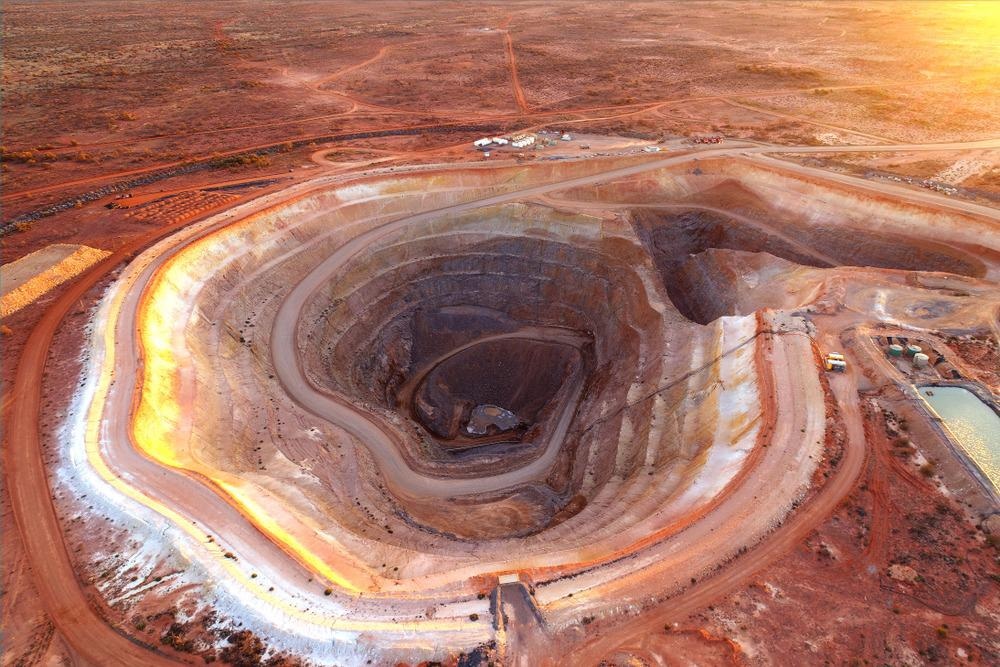Balancing the Need to Mine with Environmental Policies

Clean energy equates to higher demand for the non-renewable raw materials that make those technologies possible. Neodymium, lithium, copper, and cobalt are just 4 of the 17 minerals required to make batteries, wind turbines, solar panels, geothermal power, and electric vehicles, all of which lie within the Earth’s mantle. All of them need to be mined, extracted in some way, or obtained from recycling and reuse. They all cause varying degrees of environmental impact.

Image Credit: Symbiosis Australia/Shutterstock.com
An article published in Nature Reviews Materials, Mining Our Green Future, discusses the need for careful evaluation of accepting supplies of raw materials for green technologies to ensure they benefit people and the planet.
Paris Climate Agreement (COP21), COVID-19 Pandemic and Beyond
The Paris Climate Agreement, which entered force in 2016, is an international treaty, adopted by 196 parties, with the aim of limiting global warming to below 2 degrees Celsius.
It considers technological development and transfer for improving resilience and reducing greenhouse gas emissions.
Following on from COP21, other organizations have stepped up with their responses.
The World Economic Forum launched The Great Reset, primarily in response to the COVID-19 pandemic and to place emphasis on strengthening environmental policies.
One issue at the heart of The Great Reset, which many countries have been eager to sign up to, is the necessity to slash subsidies to the fossil fuel industry. It also calls upon private-sector businesses to steer global economies towards fairer, sustainable, and more equitable outcomes.
The COVID-19 pandemic draws attention to the need for business transitions with environmental benefits. In a climate emergency, business as usual is no longer an option as unsustainable processes are currently leading us towards irreversible climate change.
Similarly, the United Nation’s Race to Zero pledge of cutting carbon emissions to zero by 2050, demands a similar transition, whereby all energy comes from sustainable technologies.
Pledges to Reach Net-Zero
New data in the Emissions Gap Report has revealed climate emissions are still rising rapidly.
The Paris Climate Agreement pledges are already set to fail because global temperatures are now on course to rise to 2.7 °C by the end of the century.
The UN Environment Programme has stated that National plans to cut carbon simply do not work fast enough. However, it also suggests that if zero-net carbon goals are still met, hope remains that temperatures may still be reined in.
The newly published Emissions Gap Report reveals that plans needed are some seven times greater than have already been agreed. The world has just eight years to halve greenhouse gas emissions.
Mining for Green Technology Raises Demand for Metals
Regardless of how fast technological improvements are made, without a transition to green technology, what is certain is that without an immediate transition to renewable energy, we are facing ecological collapse.
In the short and medium-term, solar and wind power are the fastest options to limit warming.
Photovoltaic cells require aluminum, copper, silver, steel, indium, selenium, tellurium.
Wind turbines require steel, copper, aluminum, zinc, lead, and neodymium for turbine magnets.
The World Bank has produced a list of the anticipated percentage increases of twelve commodities by 2050, which shows what the increased rise in demand will be.
These are:
- Copper – 7{18fa003f91e59da06650ea58ab756635467abbb80a253ef708fe12b10efb8add}
- Aluminum – 9{18fa003f91e59da06650ea58ab756635467abbb80a253ef708fe12b10efb8add}
- Molybdenum – 11{18fa003f91e59da06650ea58ab756635467abbb80a253ef708fe12b10efb8add}
- Lead – 18{18fa003f91e59da06650ea58ab756635467abbb80a253ef708fe12b10efb8add}
- Neodymium – 37{18fa003f91e59da06650ea58ab756635467abbb80a253ef708fe12b10efb8add}
- Silver – 56{18fa003f91e59da06650ea58ab756635467abbb80a253ef708fe12b10efb8add}
- Nickel – 99{18fa003f91e59da06650ea58ab756635467abbb80a253ef708fe12b10efb8add}
- Vanadium – 189{18fa003f91e59da06650ea58ab756635467abbb80a253ef708fe12b10efb8add}
- Indium – 231{18fa003f91e59da06650ea58ab756635467abbb80a253ef708fe12b10efb8add}
- Lithium – 488{18fa003f91e59da06650ea58ab756635467abbb80a253ef708fe12b10efb8add}
- Cobalt – 460{18fa003f91e59da06650ea58ab756635467abbb80a253ef708fe12b10efb8add}
- Graphite – 494{18fa003f91e59da06650ea58ab756635467abbb80a253ef708fe12b10efb8add}
We clearly need mining to transition to a net-zero economy, but more critically we need rapid investment and support for new mining technologies that act to minimize damage to the environment and people.
Energy Storage Solutions
Green technology requires energy storage. New battery technologies such as hydrogen-powered ones are being explored. Some of them focus on replacing some of the metals and minerals obtained by mining.
Li-ion battery technologies that depend on lithium, copper, aluminum, graphite, and cobalt, nickel or manganese, are unlikely to be replaced before 2030.
Recycling and Reuse: The Move Towards Novel Technology
Recycling and reuse of metals alone cannot meet the rising demand for green technology.
There simply are not enough mined metals in circulation, or the infrastructures and political strategies in place to use them, even if there were.
One exception to this is the Crocodile project for the recovery of cobalt, funded by the EU Framework Programme for Research and Innovation Horizon 2020.
The Crocodile project uses bioleaching, a novel technology, which works on the extraction of metals from ores, using living organisms. It aims to increase the efficiency of cobalt recovery, drastically reducing risk, energy costs, and environmental impact.
Other new technologies are slowly coming to fruition, including metal extraction from volcanic brines and hard rocks.
Deep ocean mining is controversial because it churns up sediments and destroys ocean ecosystems, yet the International Seabed Authority (ISA) has still granted 26 licenses to contractors to recover minerals and metals, including manganese, iron, and copper from the mid-Pacific ocean.
The Future of Mining for Sustainable Energy
We need innovative, fast, and inspiring technology to reduce our reliance on carbon-intensive energy use. It needs to be breathtaking in its creative ability to halt catastrophic climate change without any further delay.
We need metals for green technology and new technologies are slowly emerging that aim to change current mining issues. Major private investment is needed to achieve this.
References and Further Reading
Mining Our Green Future (24.05.2021) Herrington. R in Nature Reviews Materials journal (Nature online) https://www.nature.com/articles/s41578-021-00325-9
Race to Resilience Race to Zero. UNFCC https://racetozero.unfccc.int
Minerals for Climate Action: The Mineral Intensity of the Clean Energy Transition in World Bank Report in 2020 (2020, Drexhage,J, Fabregas,TP, Hund,K, Laing.T, La Porta.D) https://pubdocs.worldbank.org/en/961711588875536384/Minerals-for-Climate-Action-The-Mineral-Intensity-of-the-Clean-Energy-Transition.pdf
The Great Reset (ending 24.09.2021) World Economic Forum online (PDF) https://www.weforum.org/great-reset
Emissions Gap Report 2021 (26.10.2021) UNEP, UNEP DTU Partnership https://www.unep.org/resources/emissions-gap-report-2021
Climate Change: UN Emissions gap report a ‘thundering wake up call’ (26.10.2021, McGrath.M) https://www.bbc.co.uk/news/science-environment-59049770
Table1 Anticipated Increase in demand for the 12 most needed commodities for delivering a green energy future. (2021 Herrington.R) in Nature Reviews Materials Journal https://www.nature.com/articles/s41578-021-00325-9/tables/1
First of a kind Commercial Compact System for the efficient recovery of cobalt designed with novel integrated leading technologies (06.03.2018) in Crocodile online https://h2020-crocodile.eu
Scientists track damage from controversial deep-sea mining method (25.03.2019) O.Heffernan in Nature. https://www.nature.com/articles/d41586-019-00757-y








